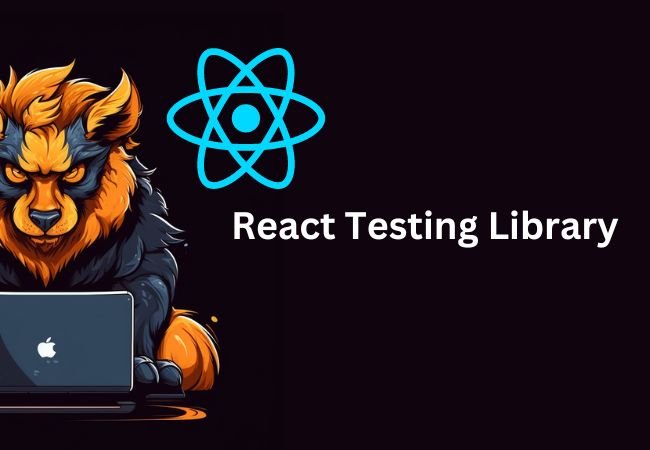React Testing Library (RTL) is a popular testing utility for React applications that allows developers to write comprehensive and maintainable tests. In this blog post, we will discuss the key features of React Testing Library, its benefits, and how to use it effectively.
Contents
What is React Testing Library?
React Testing Library is a JavaScript library that provides a simple and intuitive API for testing React components. It is designed to encourage developers to write tests that are more focused on user behavior rather than implementation details.
React Testing Library follows the principles of the Testing Library family, which is to test what the user sees and does rather than testing how the component is implemented.
Why Use React Testing Library?
React Testing Library has several benefits that make it a popular choice for testing React applications.
Focus on User Behavior
React Testing Library encourages developers to write tests that focus on user behavior, which makes the tests more maintainable and easier to understand. By testing what the user sees and does, the tests become less brittle and are less likely to break when implementation details change.
Simplicity
React Testing Library has a simple and intuitive API, which makes it easy to write tests. It provides a set of utility functions that allow developers to interact with the components as a user would, such as clicking buttons, filling out forms, and navigating through the application.
Accessibility
React Testing Library also provides utilities to test accessibility features, such as testing if the components have proper aria-labels, roles, and states.
Compatibility
React Testing Library is compatible with different testing frameworks like Jest, Mocha, and Cypress, and it can be used with other JavaScript frameworks and libraries like React Native, Next.js, and Gatsby.
How to Use React Testing Library
Now that we understand the benefits of using React Testing Library let’s dive into how to use it effectively.
Installation
First, you need to install React Testing Library and its dependencies. You can install it using npm or yarn.
npm install --save-dev @testing-library/react
or
yarn add --dev @testing-library/react
Basic Usage
React Testing Library provides a set of utility functions that allow you to interact with React components as a user would. For example, the render function allows you to render a React component and returns a set of utility functions that you can use to interact with the component.
import React from 'react';
import { render, screen } from '@testing-library/react';
import Button from './Button';</code>
test('Button renders correctly', () => {
render(<Button>Click me<Button>);
const buttonElement = screen.getByText(Click me);
expect(buttonElement).toBeInTheDocument();
});
In this example, we use the render function to render a Button component and get the button element by its text using the getByText utility function. Finally, we assert that the button element is in the document using the toBeInTheDocument function.
Querying Elements
React Testing Library provides several utility functions to query elements on the rendered component. Some of the common utility functions are:
getByLabelText: This function allows you to select a form element by its associated label text. For example, getByLabelText('Email') would select the input element with the label “Email”.
getByText: This function allows you to select an element by its text content. For example, getByText('Submit') would select the button element with the text “Submit”.
getByPlaceholderText: This function allows you to select an input element by its placeholder text. For example, getByPlaceholderText('Search') would select the input element with the placeholder text “Search”.
getByRole: This function allows you to select an element by its ARIA role. For example, getByRole('button') would select the first button element in the component.
getByTestId: This function allows you to select an element by its data-testid attribute. For example, getByTestId('submit-button') would select the button element with data-testid=”submit-button”.
In addition to these query functions, React Testing Library also provides variations of these functions that allow you to select multiple elements (getAllBy*) and functions that return null if no element is found (queryBy*). By using these query functions, you can select the elements you need to interact with in your tests and verify that they behave as expected.
Conclusion
In conclusion, React Testing Library is a powerful tool for testing React components that encourages writing tests that simulate user interactions and focus on the component’s behavior rather than its implementation details. With its simple API and built-in utilities, such as the query functions, RTL provides an easy and effective way to write comprehensive tests for your components.
By using RTL to test your React components, you can catch bugs early in the development process, ensure that your components behave as expected, and increase the overall quality of your codebase. Additionally, well-tested code can reduce the risk of regressions when making changes to your code in the future, making it easier to maintain and update your code over time.
By investing time and effort into writing effective tests using React Testing Library, you can improve the reliability and stability of your React applications and feel confident in the quality of your code.




Your point of view caught my eye and was very interesting and very informative, I learned a lot for the react testing library. Thanks. I have a question for you.
Thanks for sharing. I read many of your blog posts, cool, your blog is very good.